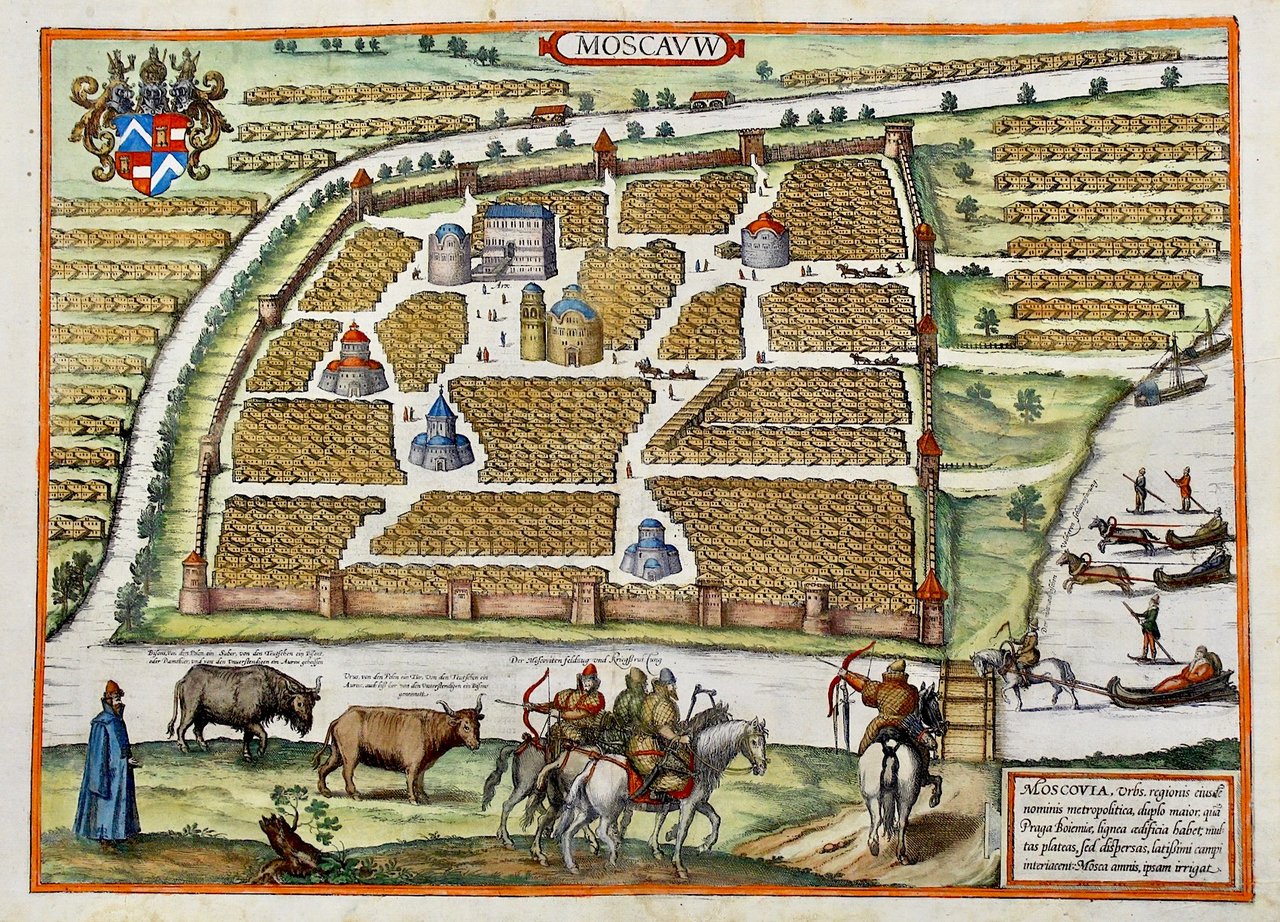Dettagli
Anno di pubblicazione
1575
Incisori
BRAUN GEORG - HOGENBERG FRANZ.
Descrizione
Incisione in rame, mm 350x490. Fascinosa veduta panoramica della metropoli russa a volo d'uccello. La città è colta in modo molto schematico, circondata da un muro. Tratta da "Civitates Orbis Terrarum", pietra miliare del vedutismo, stampata dal 1572 al 1617 in 6 volumi pubblicati in anni differenti in varie lingue, compilata e scritta da Georg Braun, mentre Frans Hogenberg fu autore delle incisioni insieme a Simon Novellanus, generalmente da soggetti di Georg Hoefnagel. Buon esemplare con qualche restauro in alto, mentre in basso è stata rifatta parte del margine e della cornice di inquadramento.<BR>(Taschen): "Moscow is shown very schematically in a bird's-eye view; between the groups of identical houses are e few people and some very simplified large buildings. In contradiction to the text, the city is surrounded by a wall. According to legend, Moscow was founded in 1147 by Yuri Dolgoruki; by the 15th century it had become a large city with decisive wordly and religious power. The symbol of wordly power is the Kremlin, which was constructed from 1485 to 1495 and extended in several stages up to 1530. In 1472, through the marriage of Ivan III with the Byzantine Princess Sophia Palaiologos, the niece of the last East Roman emperor, Moscow also became the centre of the Russian-Orthodox church. By 1600 the fast-growing city already had more than 100,000 inhabitants. On the right people can be seen taking sleigh rides on the Moskva, which is incongruous with the vegetation, and the foreground Russian soldiers, here called "Moscovites", are depicted"<BR>Copper engraving, mm 350x490. Fascinating bird-eye view of the russian capital, from "Civitates Orbis Terrarum". Braun gathered together vast amounts of information and draft plans to produce over 500 city views/maps published in six parts between 1572 and 1617. Most of these engravings were made by Simon Novellanus and Frans Hogenberg, many after drawings by Georg Hoefnagel. Good example with some restorations affecting text in upper and bottom margin: some tears and worm track in upper margin, portion of bottom margin and frame restored. (Taschen): "Moscow is shown very schematically in a bird's-eye view; between the groups of identical houses are e few people and some very simplified large buildings. In contradiction to the text, the city is surrounded by a wall. According to legend, Moscow was founded in 1147 by Yuri Dolgoruki; by the 15th century it had become a large city with decisive wordly and religious power. The symbol of wordly power is the Kremlin, which was constructed from 1485 to 1495 and extended in several stages up to 1530. In 1472, through the marriage of Ivan III with the Byzantine Princess Sophia Palaiologos, the niece of the last East Roman emperor, Moscow also became the centre of the Russian-Orthodox church. By 1600 the fast-growing city already had more than 100,000 inhabitants. On the right people can be seen taking sleigh rides on the Moskva, which is incongruous with the vegetation, and the foreground Russian soldiers, here called "Moscovites", are depicted"<BR><BR>

Scopri come utilizzare
Scopri come utilizzare

